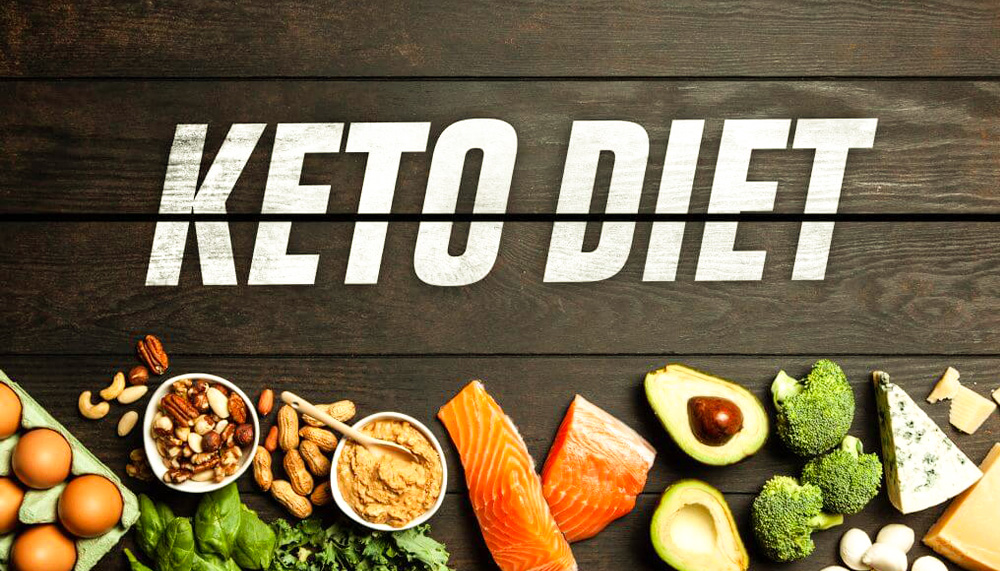Keto Diet Plan for Beginners
Introduction
The ketogenic diet, sometimes known as the “keto diet,” has gained popularity among dieters due to its efficacy in aiding with weight reduction and certain health advantages. You’ve come to the correct spot if you’re thinking about adopting this high-fat, low-carb lifestyle.
This all-inclusive book seeks to give a thorough examination of the procedures involved in beginning the ketogenic diet, along with a plethora of knowledge, insightful advice, and helpful hints to guarantee not just successful initiation but long-term success.
Understanding the Basics of Keto Diet
1.1 Macronutrient Ratios:
It is essential to have a solid grasp of macronutrient ratios before starting the ketogenic diet. About 70–80% of daily calories on the keto diet come from fat, 10–20% come from protein, and fewer than 10% come from carbs. The purpose of this macronutrient profile is to cause a state of ketosis, which is the metabolic state in which the body starts using fat instead of carbs for energy.
1.2 Ketosis:
Reaching and sustaining ketosis is the fundamental goal of the ketogenic diet. Learn about the science of ketosis and how the body produces ketones, which serve as the body’s main fuel source, in response to a sharp decrease in carbohydrate intake. Learn about the physiological alterations that take place while in ketosis and the possible advantages that this condition may provide.
1.3 Healthy Fats:
The ketogenic diet prioritizes healthy fats above other dietary theories. Examine the sources of fat such as avocados, nuts, seeds, olive oil, and fatty seafood that are in line with the keto diet’s tenets. Examine how fats support and sustain a variety of body processes and provide long-term energy.
Planning for Success:
2.1 Stock Up:
Having the proper meals in your kitchen is essential to laying the groundwork for a successful ketogenic journey. Find a detailed list of staple foods that are keto-friendly, including leafy greens, non-starchy vegetables, meats, eggs, and dairy. Make sure your surroundings support your nutritional objectives.
2.2 Create a Menu:
A key component of maintaining the keto diet is meal planning. Discover how to put up a dinner that satisfies both your dietary needs and tastes. Look through a range of keto recipes to make sure your meals are pleasurable as well as compliant.
2.3 Track Macros:
Maintaining the delicate balance demanded by the keto diet requires an understanding of the significance of tracking macronutrients. Discover the several apps and techniques for monitoring your consumption of protein, fat, and carbohydrates. You can keep on track by thoroughly investigating smartphone applications and food diaries.
Making the Transition:
3.1 Reduce Carbs Gradually:
Making the switch to a low-carb lifestyle might be difficult. Consider cutting back on carbohydrates gradually so that your body can get used to the changes. We’ll talk about controlling the adjusting period and minimizing any possible negative consequences.
3.2 Stay Hydrated:
Recognize how vital staying hydrated is while following the ketogenic diet. Elevated water loss is a typical occurrence, therefore staying well hydrated is crucial. Find out how electrolytes, particularly sodium, help to maintain hydrated.
Monitoring Your Journey:
4.1 Check for Ketosis:
Checking for ketosis on a frequent basis is one of the most important parts of a successful keto journey. Explore the range of ketone assessment techniques, including blood ketone meters and urine strips. Recognize the importance of every technique and know how to analyze the outcomes.
4.2 Listen to Your Body:
A vital component of tracking success is paying attention to your body, which goes beyond monetary measurements. Learn to read the cues your body gives you during the first few days, also referred to as the “keto flu.” Recognize that these symptoms are frequently fleeting and learn how to manage them.
Also Read : https://diet2habit.com/nutrition/the-pescatarian-diet/
Prioritizing Nutrition:
5.1 Include Vegetables:
Although low-carbohydrate foods are a hallmark of the ketogenic diet, non-starchy veggies are crucial. Explore the world of nutrient-dense veggies, which offer vital vitamins and minerals and may be easily incorporated into a ketogenic diet.
5.2 Choose Healthy Fats:
There’s more to navigating the fat terrain than just quantity. Discover the differences between different kinds of fats, emphasizing the benefits of mono- and polyunsaturated fats over the use of saturated fats. Learn more about how fats improve heart health in general.
5.3 Supplement Wisely:
Nutrient shortages are a possibility with any restricted diet. Examine the sensible application of supplements to fill nutritional deficits. Recognize which supplements—like potassium, magnesium, and certain vitamins—are especially important for keto dieters.
Seeking Guidance:
6.1 Consult with Healthcare Providers:
Recognize the relevance of individual variances in health and nutritional demands. Examine the importance of speaking with medical professionals or trained dietitians prior to starting a ketogenic diet, particularly if you have underlying medical concerns. Recognize how customized advice may adapt the keto strategy to your own circumstances.
Conclusion:
Starting a ketogenic diet involves a lifestyle change as much as a nutritional one. After reading through this extensive book, you’ll have a plethora of information, tactics, and understanding to effectively negotiate the complexities of the keto lifestyle. Realize that adopting a new eating style that supports your health objectives is just as important for successful on the keto diet as limiting yourself. You have all it takes to succeed on the keto journey and take full advantage of the potential health and energy-boosting effects of ketosis—along with a commitment to making educated decisions and living a holistic lifestyle.
For Latest News & Updates : https://indiansupdate.com/

